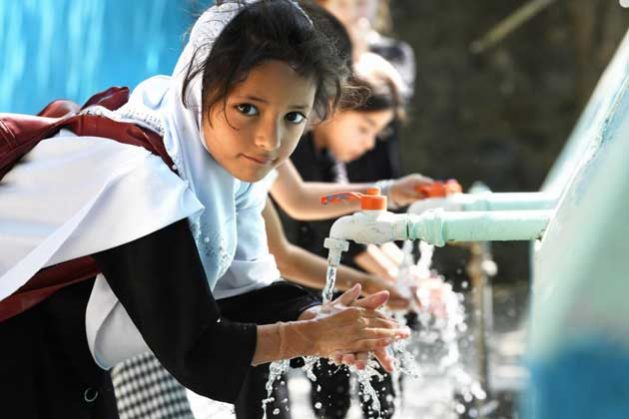
Credit: Education Cannot Wait
Mar 31 2020 – Armed conflicts, forced displacement, climate change induced disasters and protracted crises have disrupted the education of 75 million children and youth globally. And that number is growing in an unprecedented way with the spread of COVID-19. Education has been hit particularly hard by the COVID-19 pandemic with and 184 country-wide school closures, impacting 87.6% of the world’s total enrolled learners. Drop-out rates across the globe are likely to rise as a result of this massive disruption to education access.
While other critical needs such as health, water and sanitation are being responded to, educational needs cannot be forgotten and these have an equally detrimental impact if left unaddressed. The ‘pile-on effect’ of the coronavirus is that, during the global COVID-19 pandemic, interruptions to education can have long term implications — especially for the most vulnerable. There is a real risk of regression for children whose basic, foundational learning (reading, math, languages, etc.) was not strong to begin with. And millions of children who have already been deprived of their right to education, particularly girls, are being more exposed to health and well-being risks (both psychosocial and physical) during COVID-19. These are the children and youth we at Education Cannot Wait (ECW) prioritize, including:
• Girls: Young and adolescent girls are twice as likely to be out of school in crisis situations and face greater barriers to education and vulnerabilities such as domestic/gender-based violence when not in school.
• Refugees, displaced and migrant children: These populations often fall between the cracks as national policies might not necessarily include these vulnerable groups and they must be included and catered for in any global responses to this crisis if this has not already occurred.
• Children and youth with disabilities: Along with other marginalized populations, including children from minority groups, are neglected in the best of times and have lower educational outcomes than their peers.
• Young people affected by trauma or mental health issues: Schools and learning centers are places for communities to address health related issues, including mental health and psychosocial support (MHPSS), which the most vulnerable students rely on for their wellbeing and development in order to learn.
Without access to education, as shocks are experienced – including loss of life, health impacts and loss of livelihoods – children are more vulnerable and unprotected. As household finances are being strained and needs increase, out-of-school children are more likely to be exposed to risks like family violence, child labor, forced marriage, trafficking and exploitation, including by responders. For the most vulnerable children, education is lifesaving. Not only does it provide safety and protection, importantly, it also instils hope for a brighter future.
So continuing education through alternative learning pathways, as soon as possible, must also be a top priority right now, to ensure the interruption to education is as limited as possible. We urgently need to support teachers, parents/caregivers, innovators, communications experts and all those who are positioned to provide education, whether through radio programmes, home-schooling, online learning and other innovative approaches.
What does this mean for responders like ECW? In the short term, this means we must maintain access to learning and ensure kids retain knowledge and skills (i.e. through temporary remote, alternative or distance learning programmes). In the medium term, this means catching up and transitioning students who have fallen behind or had a break in their education to re-join their level of schooling and competency (i.e. automatic promotion with a mandatory catchup/remedial period at the beginning). In the longer term, this means there is a need for education systems to be set up with contingency capacities to mitigate and manage risk in the future.